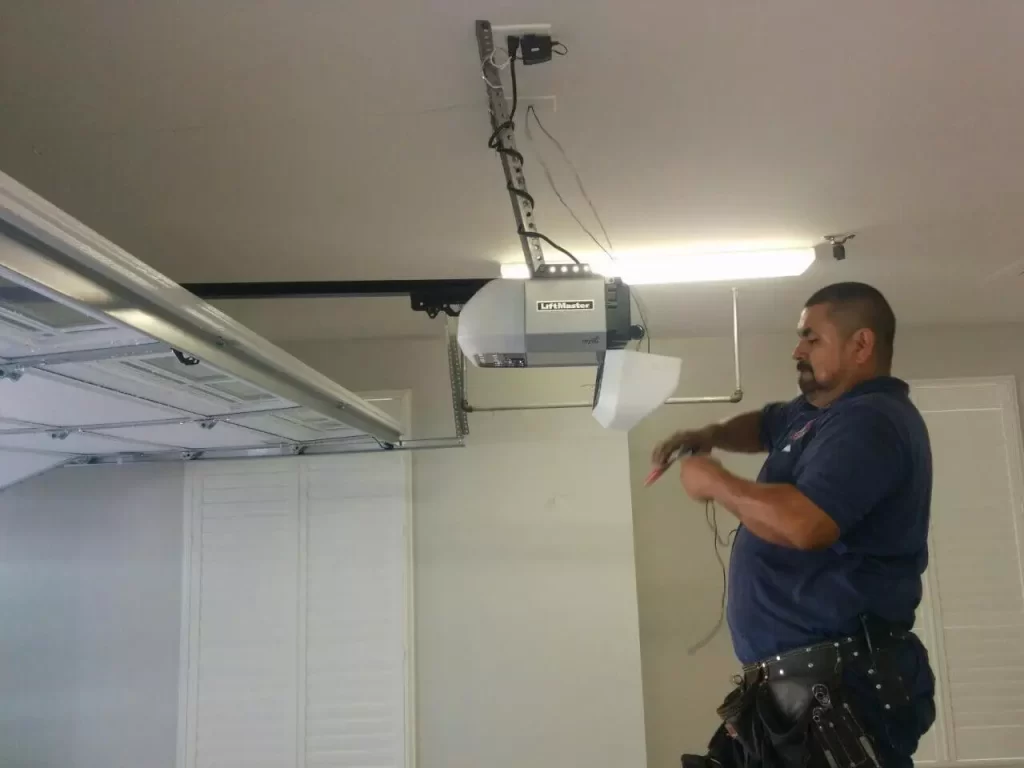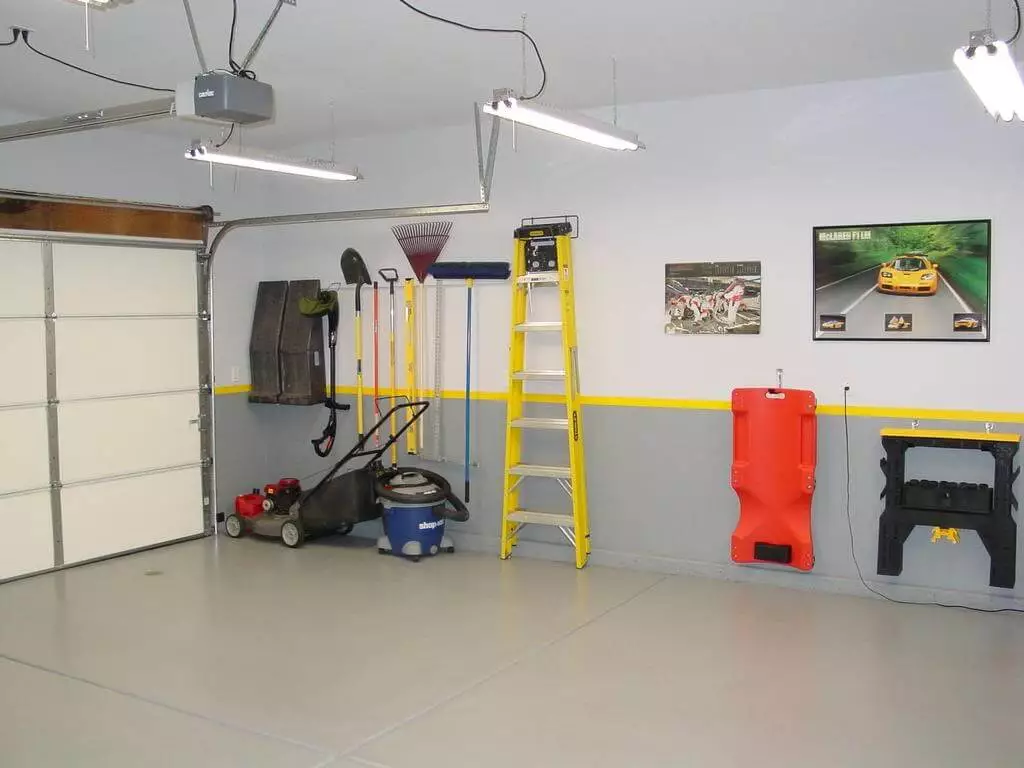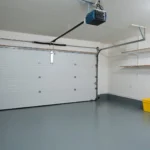Is your garage door acting up? Don’t fret! We’ve got you covered with a simple solution: adjusting your garage door opener force. By tweaking this crucial setting, you can ensure smooth and safe operation while preventing unnecessary damage. In this guide, we’ll walk you through the process in easy-to-follow steps, so you can get back to hassle-free garage door usage.

Content
Preparing for Adjustments
Before diving into adjusting the garage door opener force, it’s crucial to take a few necessary steps to ensure a safe and effective process. By preparing correctly, you’ll minimize the risk of accidents and maximize the chances of success. Here’s a step-by-step guide to get you started:
Disconnect the Power
Safety first! Before tinkering with your garage door opener, make sure to disconnect the power supply. This step eliminates the risk of electric shocks and keeps you safe throughout the adjustment process.
Check the Door’s Balance
A well-balanced Garage door spring repair Suffolk is essential for smooth operation. To determine if your door is balanced, start by closing it completely. Then, disengage the opener by pulling the release cord. Gently lift the door manually, and if it stays in place without falling or rising, it’s balanced. If not, you may need to address the balance issue before proceeding.
Inspect for Obstacles
Clear any potential obstacles that may hinder the adjustment process. Check for objects, debris, or obstructions along the garage door tracks or near the opener. Removing these obstacles will ensure a smooth adjustment and prevent any interference during operation.
Gather the Required Tools
To make the adjustment process easier, gather the necessary tools beforehand. This typically includes a ladder, a screwdriver or Allen wrench (depending on your opener model), and a flashlight for better visibility in dimly lit areas.
Adjusting the Garage Door Opener Force
Ready to fine-tune your garage door opener force for optimal performance? With the right guidance, it’s a breeze! Follow these step-by-step instructions to adjust both the opening and closing force settings, ensuring your garage door operates smoothly and safely.
Process of Adjusting the Force Settings
- Start by consulting the manufacturer’s instructions specific to your garage door opener model. These instructions will provide valuable insights into the adjustment process tailored to your system.
- Locate the force adjustment screws on your opener unit. These screws control the amount of force exerted by the opener when opening or closing the door.
- Using a screwdriver or Allen wrench (as specified in the instructions), turn the opening force adjustment screw counterclockwise to decrease the force or clockwise to increase it. Make gradual adjustments to find the right balance.
Adjusting the Opening Force
- With the garage door fully closed, activate the opener to open the door.
- Observe the door’s movement. If it doesn’t open smoothly or reverses immediately, the opening force may be too high. Adjust the opening force screw incrementally until the door opens smoothly without reversing.
Adjusting the Closing Force
- Place a block of wood or similar object on the ground beneath the center of the garage door.
- Close the door using the opener. If the door hits the block and reverses, the closing force is too high. Gradually decrease the closing force screw until the door closes completely without reversing.
Finding the Right Balance
Remember, the goal is to strike the perfect balance between too much and too little force. The ideal setting ensures the door operates smoothly without putting unnecessary strain on the opener or risking damage to the door or objects in its path.
Maintaining Proper Garage Door Opener Force
Congratulations on successfully adjusting your garage door opener force! Now, let’s talk about how to ensure it stays in optimal condition. Regular maintenance is key to prolonging the life of your opener and preventing any potential issues down the line. Here are some essential tips to keep your garage door opener force in check:
Perform Periodic Checks
Make it a habit to visually inspect your garage door and opener every few months. Look out for any signs of wear and tear, loose components, or unusual noises during operation. Identifying potential issues early on allows for prompt action and prevents them from escalating.
Test the Door’s Balance
Regularly test the balance of your garage door to ensure it remains in proper alignment. With the door closed, disconnect the opener and manually lift the door halfway. If it stays in place, it indicates good balance. If it falls or rises, it may be necessary to adjust the balance or seek professional assistance.
Lubricate Moving Parts
Keep the moving parts of your garage door and opener well-lubricated to minimize friction and maximize smooth operation. Apply a silicone-based lubricant to the rollers, hinges, tracks, and springs. Avoid using oil-based lubricants as they can attract dirt and cause buildup.
Check Safety Features
Your garage door opener is equipped with various safety features, such as photo-eye sensors and auto-reverse mechanisms. Regularly check that these features are functioning correctly by placing an object in the door’s path during closing. The door should reverse immediately upon contact with the object.
Make Adjustments as Needed
If you notice any changes in the performance of your garage door opener force, such as excessive force or inconsistent operation, don’t hesitate to make adjustments promptly. Refer to the manufacturer’s instructions or seek professional assistance if needed.
Conclusion
Adjusting your garage door opener force is a crucial step in ensuring smooth and safe operation. By following the manufacturer’s instructions and making gradual adjustments, you can fine-tune the force to optimal levels. Regular inspections and maintenance will help keep your garage door opener in top shape, providing you with peace of mind and convenience.
FAQs
Why is my garage door opener force too high?
The force may be too high if the door opens too quickly, makes loud noises, or doesn’t reverse when obstructed. Adjust the opening force screw clockwise to decrease the force gradually until the door operates smoothly.
How do I know if my garage door opener force is too low?
If the door doesn’t open fully, reverses immediately after closing, or struggles to close, the force may be too low. Turn the opening force adjustment screw counterclockwise to increase the force incrementally until the door operates properly.
What if I can’t find the force adjustment screws on my garage door opener?
The location of the adjustment screws can vary depending on the opener model. Consult the manufacturer’s instructions or contact their customer support for guidance on locating the force adjustment screws specific to your opener.
Are there any risks associated with adjusting the garage door opener force?
While adjusting the force is generally safe, it’s essential to make incremental adjustments and test the door’s operation after each change. Avoid excessive force, as it can damage the door or opener mechanism. If unsure, consider seeking professional assistance.
How often should I adjust the garage door opener force?
It’s recommended to adjust the force settings when you first install the opener and periodically thereafter. Perform visual inspections and test the door’s balance regularly. If you notice any issues with the door’s movement or force, it’s time to make adjustments.

Safety-first is Troy’s motto. He’s your guide to a secure garage space, offering advice that puts your peace of mind front and center.








